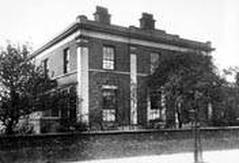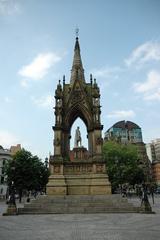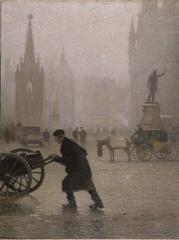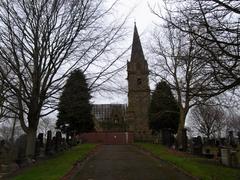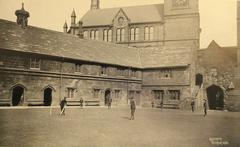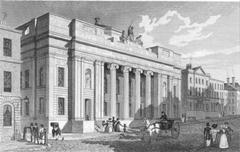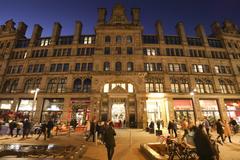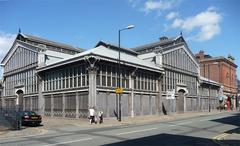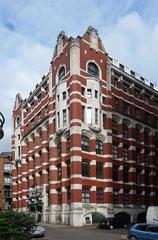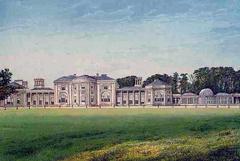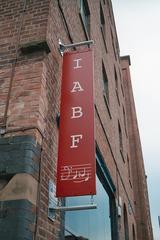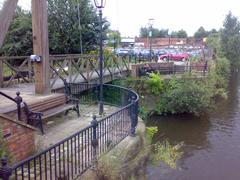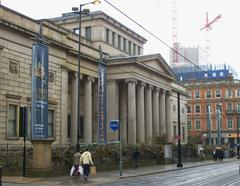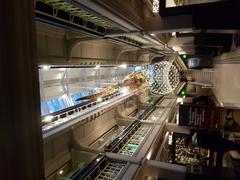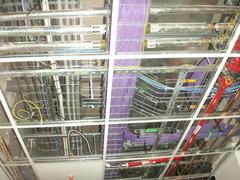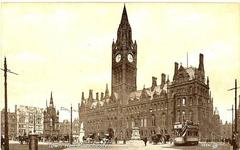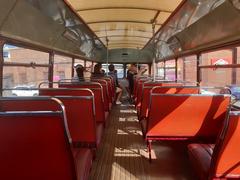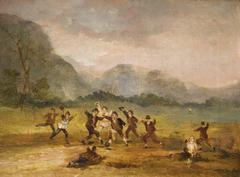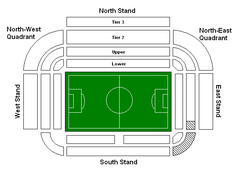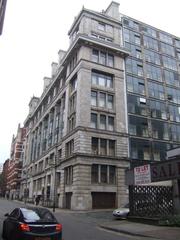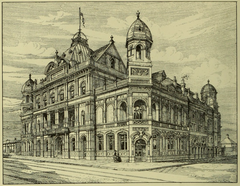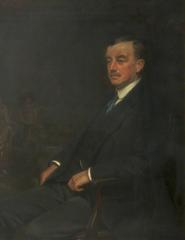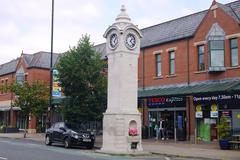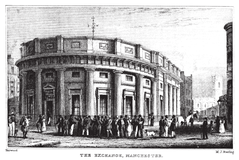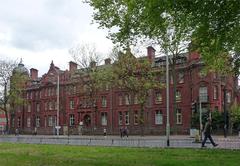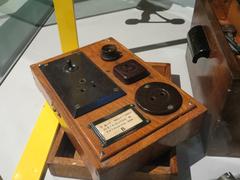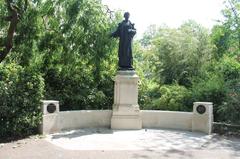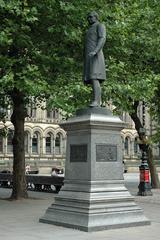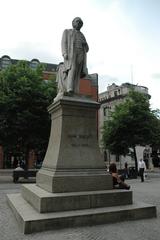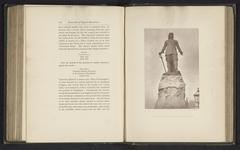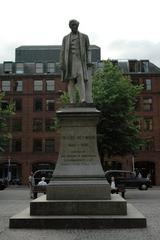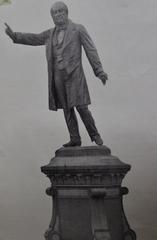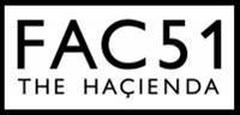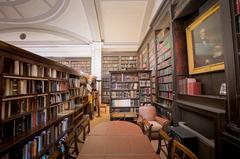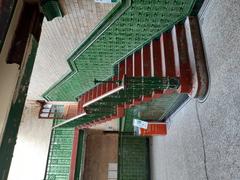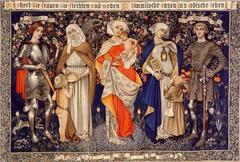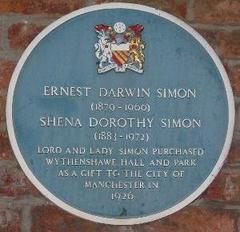
Kilburn Building Visiting Guide: Manchester Historical Site Tickets and Hours
Date: 04/07/2025
Introduction
The Kilburn Building, set at the heart of the University of Manchester campus, is a defining landmark in the evolution of computer science and a prime example of late-modernist architecture. Named after the computing pioneer Tom Kilburn—who, alongside Freddie Williams, was instrumental in developing the world’s first stored-program computer—the building has fostered decades of innovation and education. This comprehensive guide details the Kilburn Building’s historical and architectural significance, visitor information, accessibility, special events, travel tips, and nearby attractions to help you plan a rewarding visit. For up-to-date details, always refer to the University of Manchester’s official resources (Kilburn Building Manchester Visitor Guide) and in-depth architectural insights (Wikiwand Kilburn Building).
Contents
- About the Kilburn Building
- Visitor Information
- Opening Hours
- Tickets and Entry
- Accessibility
- Special Events and Guided Tours
- Historical Significance
- Architectural Overview
- Travel Tips and Nearby Attractions
- Photographic Spots
- Frequently Asked Questions (FAQ)
- Plan Your Visit
- Useful Contacts and Resources
- Conclusion and Recommendations
About the Kilburn Building
The Kilburn Building, named after Professor Tom Kilburn, stands as a monument to the roots and progress of computer science. It is home to the University of Manchester’s School of Computer Science, the first dedicated department of its kind in the UK, established in 1964. The building reflects Manchester’s continuous leadership in digital innovation, blending its academic legacy with ongoing research in fields such as artificial intelligence and cybersecurity.
Visitor Information
Opening Hours
- General Access: Monday–Friday, 8:00 AM–6:00 PM. Access may be restricted during university holidays or special events.
- Public Events and Open Days: Additional hours may be available; always confirm via the university website.
Tickets and Entry
- General Admission: Free of charge.
- Special Events: Select exhibitions, lectures, or guided tours may require advance registration or tickets. Check the university’s events portal for booking details.
Accessibility
- The Kilburn Building is fully accessible, with ramps, lifts, and accessible restrooms.
- For visitors with specific requirements, contacting the university in advance is recommended.
Special Events and Guided Tours
The Kilburn Building regularly hosts public lectures, special exhibitions, and interactive demonstrations related to computer science and technology. Guided tours are available, especially during open days and major events, offering insights into the building’s history, architecture, and scientific achievements. Booking in advance is suggested due to limited availability.
Historical Significance
The Manchester Baby and Beyond
- Manchester Baby (1948): The world’s first stored-program computer, built under Tom Kilburn and Freddie Williams, ran its inaugural program here.
- Ferranti Mark 1 and Atlas: Subsequent groundbreaking projects cemented the university’s role in global computing history.
- School of Computer Science: Founded in 1964, the department continues to shape the future of digital technology.
A working replica of the Manchester Baby is on display at the Science and Industry Museum, a short distance from campus.
Architectural Overview
Design and Context
- Architectural Team: Building Design Partnership (BDP), completed in 1972.
- Location: Oxford Road, Manchester, within the university’s academic quarter, surrounded by a mix of Victorian and modern buildings.
- Site Features: Built above the culverted Cornbrook river, symbolizing integration of urban and academic infrastructure.
Exterior and Interior
- Façade: Characterized by robust red-brick piers and vertical window strips, creating a rhythmic, monumental appearance.
- Layout: A perfect square footprint (76 by 76 meters), three storeys high, with open-plan laboratories and teaching spaces.
- Piazza: The second-floor paved piazza, inspired by Auguste Perret, offers an outdoor communal space and features modernist sculptural elements.
Style and Symbolism
- Style: Late-modernist/Brutalist, emphasizing function, modularity, and the honest expression of structure.
- Symbolism: The building’s resemblance to a computer CPU heat sink and its bold, utilitarian design reflect its purpose as a “machine for learning.”
Travel Tips and Nearby Attractions
Getting There
- By Train: Manchester Piccadilly station (20-minute walk).
- By Bus: Frequent services along Oxford Road.
- By Tram: St Peter’s Square stop (15-minute walk).
- Parking: Nearby pay-and-display car parks (Booth Street East/West, NCP Manchester Chester Street); no parking onsite.
Nearby Attractions
- Science and Industry Museum: Features a replica of the Manchester Baby.
- Whitworth Art Gallery: Showcasing contemporary art.
- Manchester Museum: Natural history and cultural exhibits.
- Alan Turing Building: Center for advanced mathematics and computing research.
- John Rylands Library & Manchester Town Hall: Architectural and cultural landmarks.
Food and Refreshments
Numerous cafés, restaurants, and shops are located along Oxford Road and on University Green.
Photographic Spots
- Kilburn Building Façade: The rhythmic brickwork and vertical windows make for striking images.
- Second-Floor Piazza: Offers unique perspectives of the university and cityscape.
- Surrounding Landmarks: Whitworth Hall and the Alan Turing Building are nearby favorites.
Frequently Asked Questions (FAQ)
Q: What are the Kilburn Building’s visiting hours?
A: Monday–Friday, 8:00 AM–6:00 PM. Verify current hours before your visit.
Q: Is there an entry fee?
A: No, but some events or tours may require registration.
Q: Is the building accessible for visitors with disabilities?
A: Yes, with full step-free access and accessible facilities.
Q: Are guided tours available?
A: During open days or by arrangement for groups; contact the university for details.
Q: Can I see the original Manchester Baby?
A: A replica is displayed at the Science and Industry Museum nearby.
Q: Is photography allowed?
A: Permitted in public areas; please check restrictions for labs and events.
Plan Your Visit
- Coordinate Access: Arrange appointments or tours in advance, particularly if you require building access beyond public areas.
- Check Events Calendar: For lectures, exhibitions, and open days.
- Use Public Transport: Parking is limited; public transport is recommended.
- Download Virtual Tours: The university offers 360-degree virtual tours for remote visitors.
Useful Contacts and Resources
- Reception Desk: Main entrance for assistance.
- IT Services: Visitor Information
- Interactive Campus Map: University of Manchester Map
- Events Calendar: University Events
Conclusion and Recommendations
The Kilburn Building is not only a cornerstone of Manchester’s academic landscape but a living symbol of the digital age’s origins and development. From its pioneering role in computer science to its bold, modernist architecture, it offers visitors a unique window into technological history and innovation. To maximize your visit, check for current hours, events, and accessibility arrangements on official university platforms. Nearby attractions such as the Science and Industry Museum and the Alan Turing Building make it easy to combine your visit with a broader exploration of Manchester’s rich scientific and cultural heritage. For enhanced experiences, the Audiala app provides guided tours and interactive content.
Sources
- University of Manchester: Kilburn Building Manchester: Visiting Hours, Tickets & Historical Significance, 2025
- Wikiwand: Kilburn Building Manchester: Visiting Hours, History, and Architectural Significance, 2025
- University of Manchester IT Services: Kilburn Building Manchester: Visiting Hours, Access, and Visitor Guide, 2025
For more information and planning resources, consult the official University of Manchester Kilburn Building page and the Wikiwand Kilburn Building article.

